4 Transit Technology Trends You Should Know For 2024
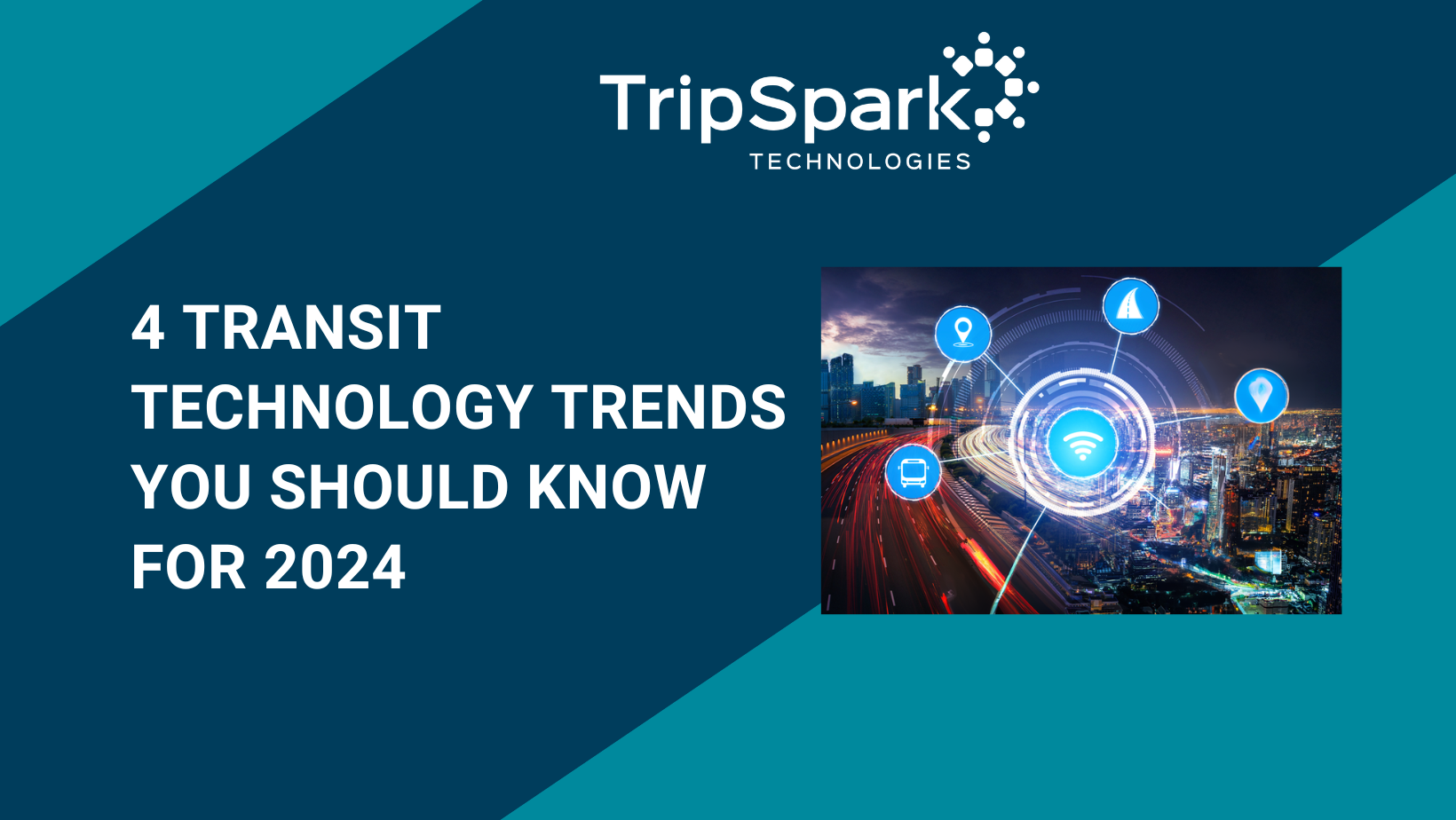
For years transit technology has been transforming the sector, helping agencies plan and deliver services efficiently while promoting better trip experiences for every type of rider. With the rapid pace of innovation comes new trends and exciting technology that will take public transportation into the future. That’s great news for transit agencies!
There have been major leaps forward in the transit industry over the past decade or so. Alternative fuel sources and technology integration has led to better experiences for riders and improved decision-making by agencies. In 2024, TripSpark’s product experts expect that will continue.
While the trends highlighted in this article won’t likely become mainstream for years, there will continue to be pressure on agencies to implement technology that improves customer experience and attracts ridership. Let’s explore some of the emerging transit technology trends that should be on your radar for 2024 and beyond.
Micromobility – Scooting Us Closer to Multimodal Transportation
Micromobility is the use of lightweight vehicles for transportation, such as bicycles, e-bikes, scooters, e-skateboards, mopeds, and more!
According to the North American Bikeshare and Scootershare Association, micromobility ridership grew to a whopping 157 million trips taken across North America in 2022. 64% of those riders used micromobility to connect to public transit.
What makes micromobility appealing is that it’s an affordable way to exercise while offsetting carbon emissions and getting to a transportation stop. However, despite its popularity and benefits, integrating micromobility into public transit systems has been a slow, variable process across the globe. Some cities have introduced shared micromobility programs while others have left that responsibility to privately owned companies.
Yet, micromobility has enormous potential for helping transit agencies offer multimodal transportation, particularly because it solves the first-mile last-mile problem for some riders. Integrated with public transit systems, micromobility could expand access to transportation, making services more equitable, sustainable, and appealing to riders.
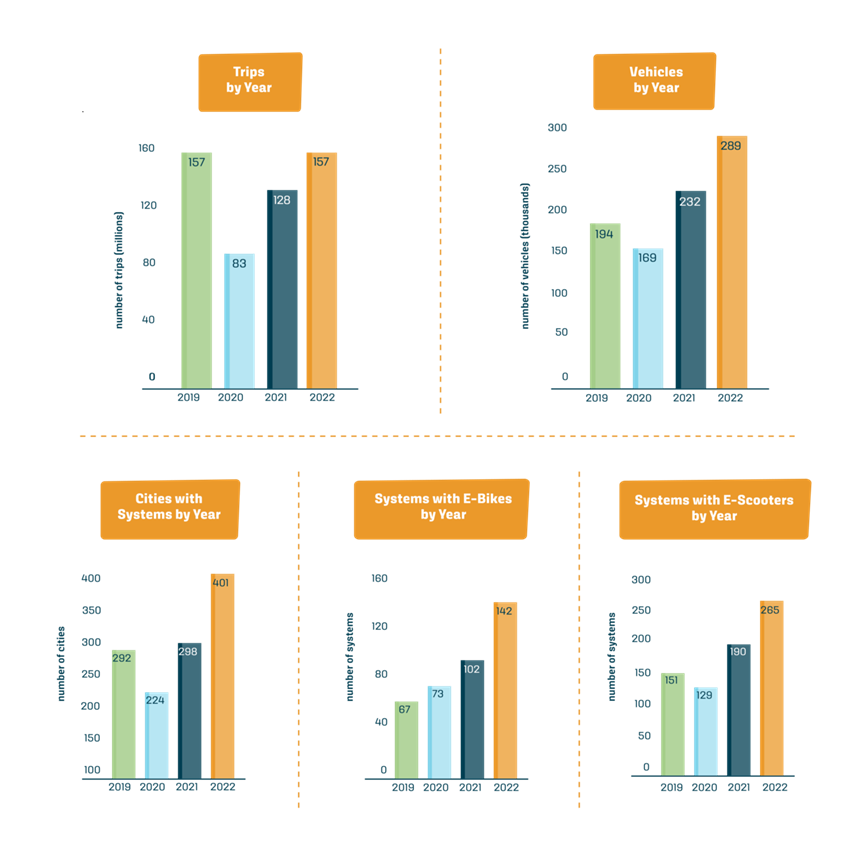
(Source: North American Bikeshare & Scootershare Association)
5G Technology – Wireless Connectivity at Full Speed
Intelligent transportation solutions have enabled agencies to establish better two-way communication between dispatch, vehicles, and passengers during trips. Wireless connectivity is a critical component for keeping the flow of data stable between transit IoT devices.
5G technology has higher bandwidth capabilities and lower latency allowing data to be transmitted between devices in a flash. In-vehicle connectivity with 5G will be faster and more reliable for using signal priority technology, contactless payment systems, live feed security cameras, digital signage with real-time information, and offering a steady wi-fi connection to riders.
5G can facilitate a frictionless multimodal journey where riders pay once and then use a smartphone to receive directions, plus real-time schedule changes and notifications as they travel from stop to stop on to their final destination.
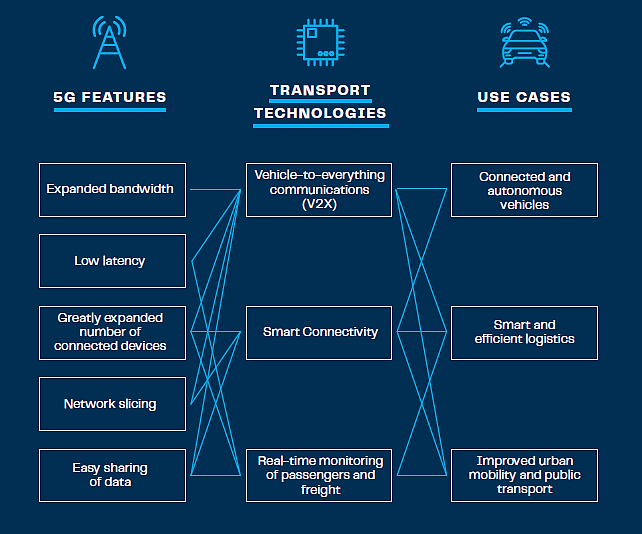
(Source: World Bank)
Smart Traffic Management Systems – At the Intersection of Technology and Transit
Smart traffic management systems use connectivity with 4G, 5G, or other services, to communicate with traffic hardware and road infrastructure built with IoT sensors, such as traffic lights, toll gates, and CCTV cameras. Then by leveraging artificial intelligence, machine learning, and predictive analytics, cities and municipalities can use real-time data collected about traffic congestion, accidents, and road conditions to improve traffic flow and road safety.
The increasing adoption of smart traffic management systems will one day mean transit vehicles can talk to smart traffic hardware and road infrastructure. For public transit agencies already using real-time data to improve services, this adds another layer of accurate information that can help you optimize routes and schedules. Improved traffic flow and better road conditions also will result in less idle time, and reduced fuel consumption and maintenance costs.
When transit vehicles are in sync with smart traffic management systems, the outcome is efficient and seamless services that makes public transportation more attractive to riders.
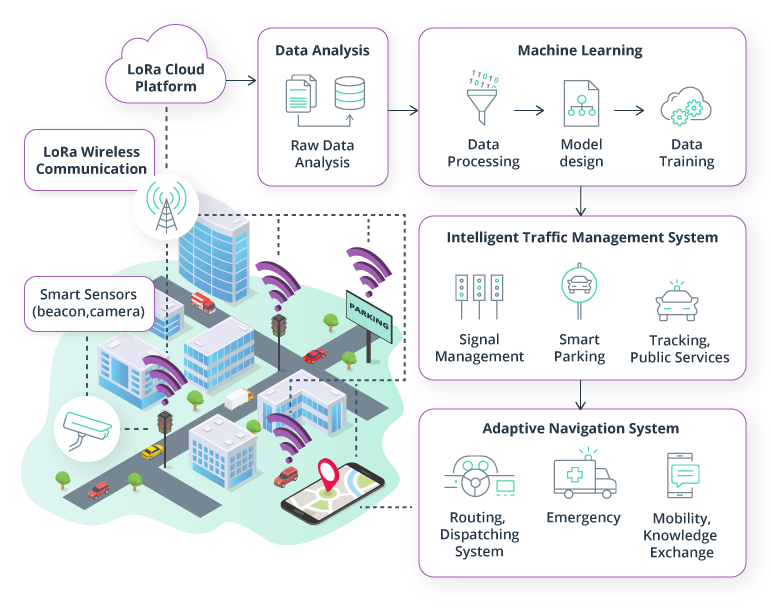
(Source: IEEE)
Vehicle-to-Infrastructure (V2I) – Revving Up Communications
Vehicle-to-infrastructure (V2I) is a communication model that uses wireless connectivity for a two-way exchange of information between a vehicle and smart traffic systems with sensors, including traffic signals, stop signs, or road infrastructure.
The goal of V2I is to improve road safety and research by the NHTSA estimates that the use of V2I, along with vehicle-to-vehicle (V2V) communication technology, could eventually prevent or reduce the severity of non-impaired traffic accidents.
Enabled by 5G technology, V2I could help your drivers with on-time performance by communicating with traffic lights to improve the flow of traffic. It can also notify drivers about collisions, traffic jams, and bad road conditions, as well as the nearby presence of cyclists or pedestrians. The data collected from V2I communication can be used for route optimization, improving fleet performance, minimizing fuel usage, and developing sustainable practices.
While V2I is in the early stages of development, it has significant safety, mobility, environmental, and operational benefits for transit agencies in the future.
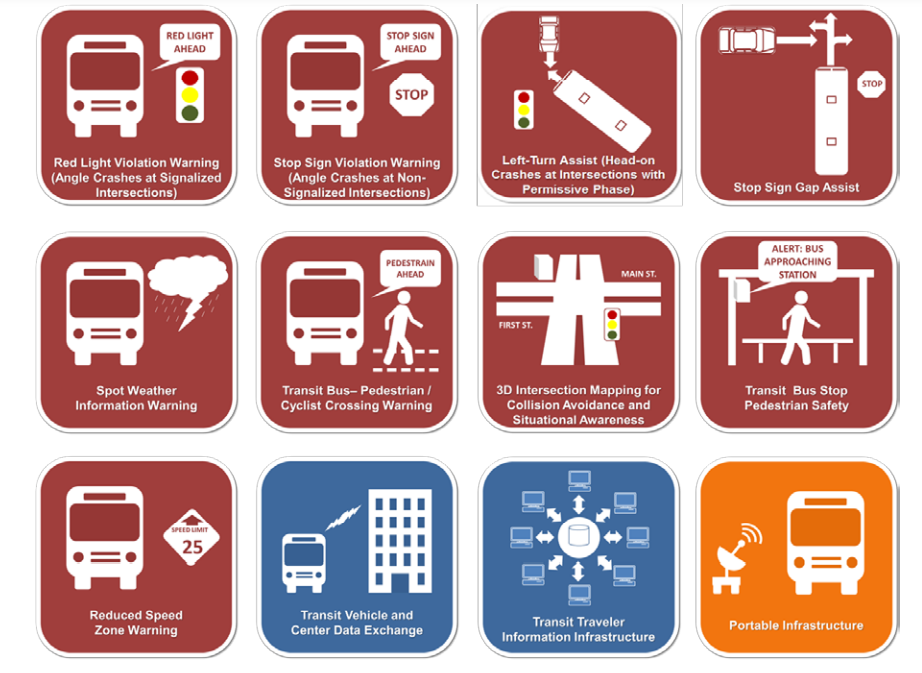
(Source: UDOT)
Taking Public Transit to the Next Level
Exciting trends in technology will one day help agencies with multimodal transportation and greater connectivity between dispatch, vehicles, passengers, and smart road infrastructure. While we probably won’t see some of these trends go mainstream for years, this technology will likely shape and influence the future of public transit.
The public transportation landscape is constantly evolving which means agencies striving for transit excellence need to constantly evolve too. What probably won’t change is the struggle to manage priorities with limited resources and not knowing how to take transit to the next level. Should agencies focus on improving ridership? Or is it better to increase coverage? Will investing in a technology platform provide better information for transit system planning?
As agencies grapple with their unique challenges, riders will continue to ask for more services, and TripSpark is here to help you make sense of the technology side of public transportation. We’re proud to work with our agency partners to understand your needs so that we can build products that provide value and help you create a transit system that really works!
With the right combination of our proven software, hardware, and passenger technologies, it’s easy to level up your agency’s services. When we work together, we move more people together!
Let’s have a conversation about what your agency needs to journey into the future. Get in touch today!


